Sicily to Rome the Slow Way – Ed’s Perspective
I couldn’t resist. As soon as I saw that you could take a train from Catania to Rome, I had to add that ride to our train experiences. Only the Italians could come up with a plan to put an entire train on a ferry to cross from Sicily to the mainland. So, why not? We had not even come close to fully experiencing Rome and here was an opportunity to a make another visit. Besides, I rationalized, the airfare from Rome to Valencia was far cheaper than from Sicily. Never mind that the train would be a nine-hour trip. It runs right along the western coastline most of the way. Very exciting.
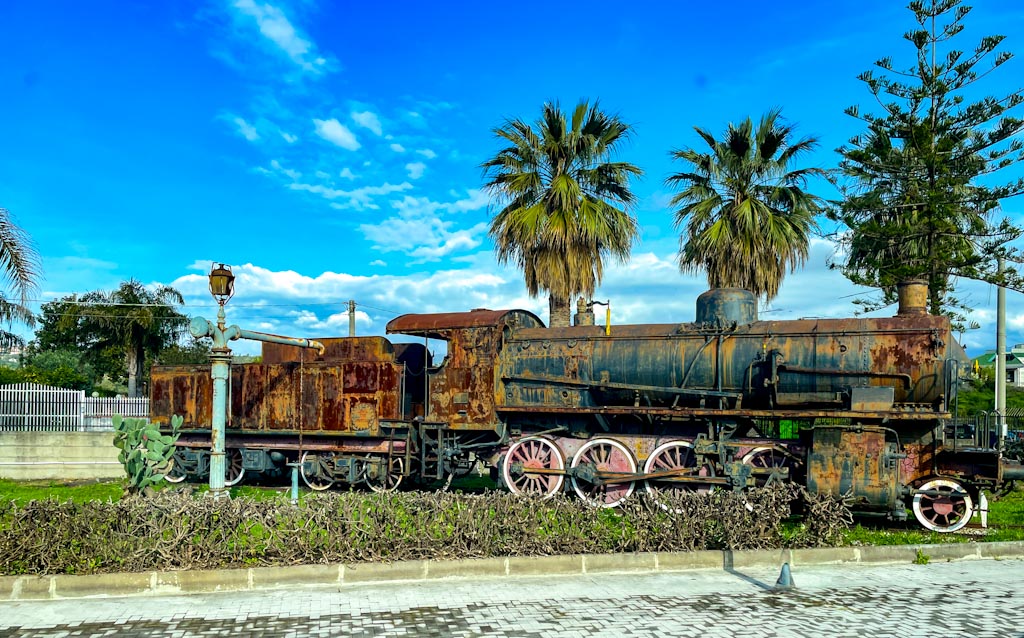
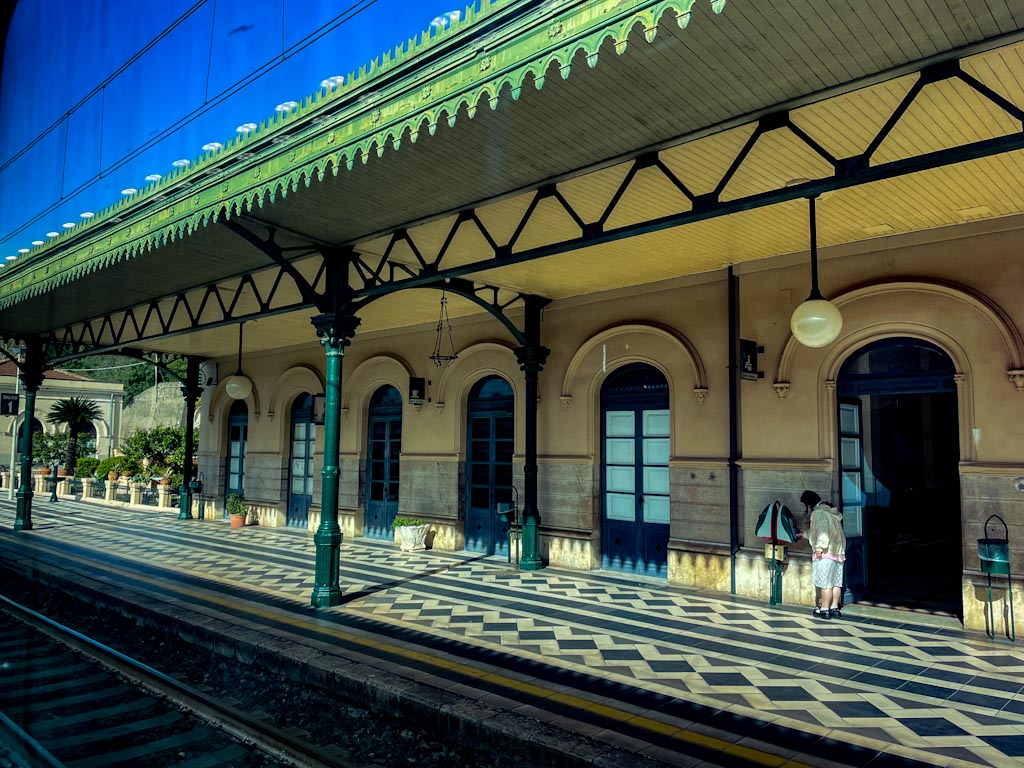
The morning we boarded was wet and cold . . . again. Oh well. We would be tucked into our cozy train seats, enjoying the scenery, warm and dry. The train made a couple of stops, and then we were approaching the port city of Messina at the northern tip of Sicily. The train slowed to a crawl and I watched on Google Maps as the track simply ended at the water’s edge. Looking out the window it soon became clear that we were slowly moving onto a ferry with tracks built into the deck. A section of train would be loaded, separated from the trailing section which would then be directed to an adjoining track. Our train only filled two of a potential five tracks on the ferry. When all was secured, the doors to the train car slid open and we were free to explore the ferry. It was all done smoothly and efficiently, without drama. Actually, kinda anti-climatic. Except that I love being on the water, and the novelty of leaving our train to wander about the deck of a ferry was really sort of surreal.
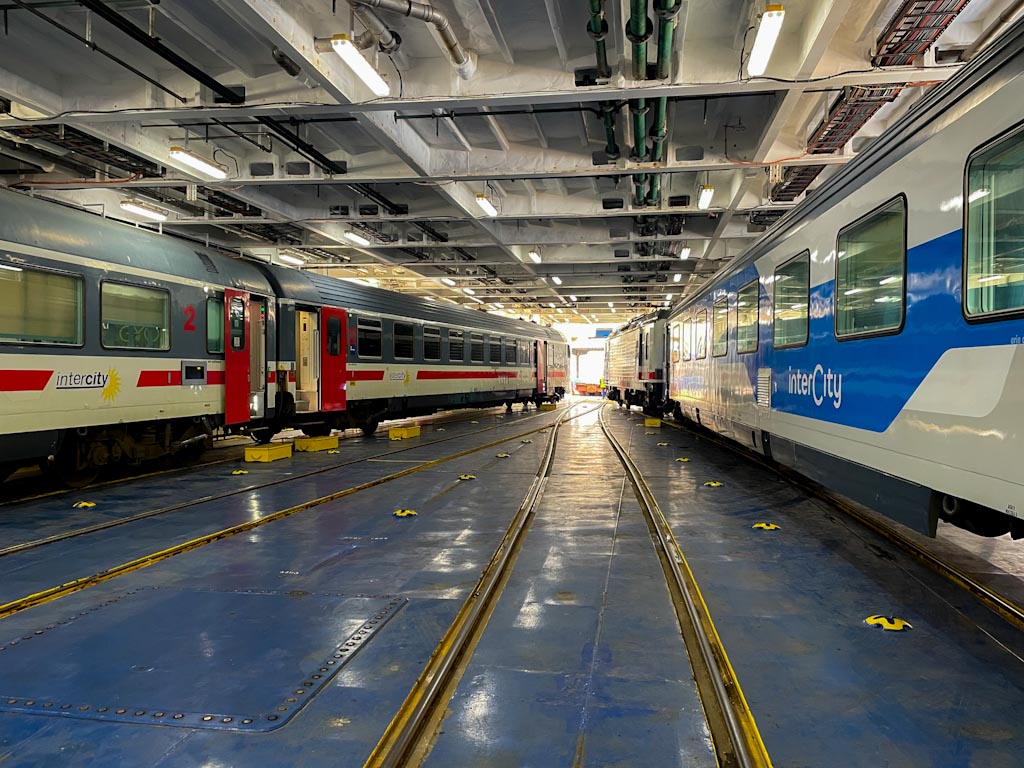
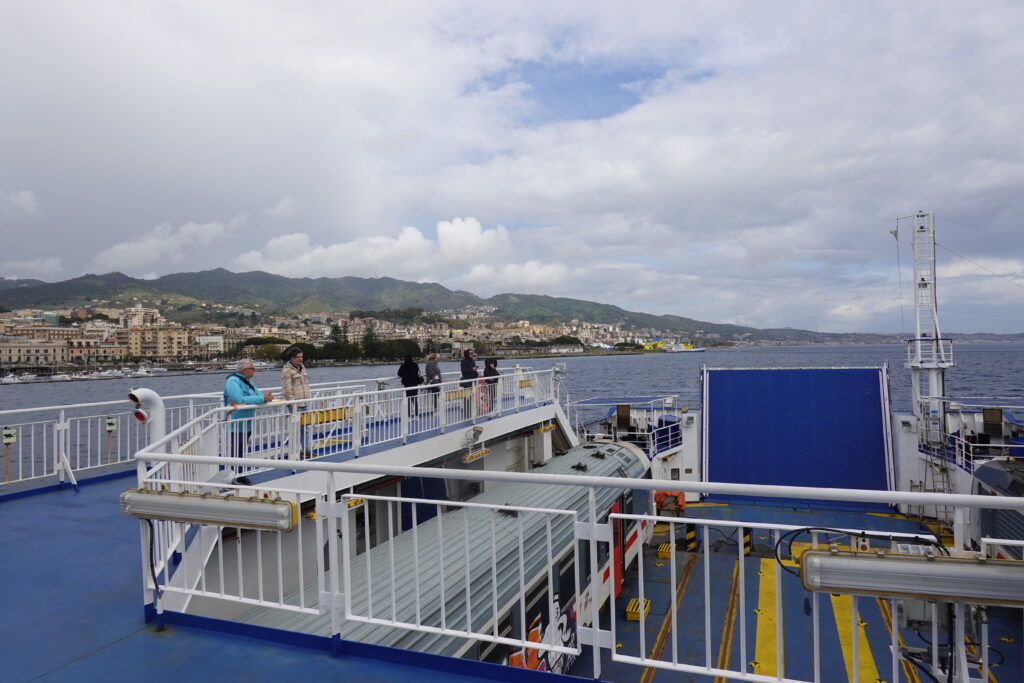
Forty minutes later, we were back on dry land, our train reassembled, chugging north to the Italian capitol and a date with the religious epicenter of Western Europe.
Next Stop: Patience – Bonnie’s Perspective
With practice, we’ve become pretty good at travel logistics. Getting ourselves from Point A to Point B can sometimes be challenging, but we navigate the chaos of airports, train stations, bus terminals, and metro stops with ease stations with ease most of the time. We do our homework, arrive early, take it slow, stay flexible, and help each other keep track of belongings. We have systems that work. Usually. Every once in a while, something goes awry. Case in point: our journey from Catania to Rome.
Boarding a train in Catania at 8:30AM, our expected arrival time in Rome was 6:30PM. Ten hours is a long time to spend on a train. No problem. It would be a day of rest and time to write our blog post about Sicily. We grabbed a croissant and cappuccino at the train station before boarding and planned to buy lunch at the café car on the train. Around noon, Ed went hunting for the café car and returned shortly with disappointing news: vending machines would have to do. Cookies, chips, and crackers was our lunch menu. Not our usual midday fare.

Then, somewhere between Naples and Rome, there were “technical difficulties” resulting in a delay of about two hours. Twelve hours is a long time to spend on a train. No problem – these things happen. When we finally arrived in Rome’s massive central train station around 8:30PM, we figured we could still make it to dinner after a quick 30-minute taxi ride to our hotel. Nope. The taxi line was very long, and a single taxi was appearing every 3-4 minutes. Plan B: have dinner while standing in line. Just inside the train station was a pizza place, of course. When I ordered 4 pieces of pizza, I didn’t realize I had ordered 4 very large squares that would each be cut in half after reheating in a small oven. With two bottles of water and a box full of pizza in hand, I returned to the line to find Ed had moved forward all of about two feet.

By the time we finished dinner, we’d moved forward another 3-4 feet. There were dozens of people in front of us and the taxis were still arriving at a slow pace. No problem. We were in Rome, after all. And, we had a little entertainment to help pass the time. We had noticed, as is typical in Italy, 3-4 soldiers hanging out just outside the train station in their army fatigues and carrying big guns. I suppose they were keeping us safe. From what I’m not sure, but their presence was oddly disturbing and reassuring at the same time.
A few minutes after finishing our dinner, a loud crash of breaking glass startled us. We turned to see a drunk guy, who had been laying on the ground near the taxi line, had dropped (or thrown) a bottle of booze on the pavement. Within seconds, he was pinned to the ground by soldiers. In a few more seconds, four soldiers grew to eight soldiers. A few minutes later, police officers started arriving on the scene – eight of them. After 15 minutes of discussion, the drunk was released and stumbled into the train station. The soldiers dispersed after a few minutes, but the police officers seemed to have a lot to discuss, and they stayed for another 20 minutes or so. It occurred to me that there were lots of mafioso in Italy to be apprehended, but Ed didn’t think it was a good idea to offer this suggestion to the officers.
The taxi wait turned out to be 90 minutes and we finally made it to our hotel around 10:00PM. We decided to hit the sack because our alarms were set for 6:00AM to get to the 7:15AM meeting spot for our Vatican tour the next morning. We were journey weary, but no problem – we were in Rome!
The Vatican – Ed’s Perspective
Being as this was our second trip to Rome in the past year, we decided we really needed to check the Vatican box this time. We were both pretty ambivalent about it, at this point. In the past two years of bouncing around Europe, we have been in more churches than our previous two decades, but it’s Saint Peter’s Basilica, Michelangelo, Botticelli, the Sistine Chapel, the absolute pinnacle of Western European art and architecture. Right?
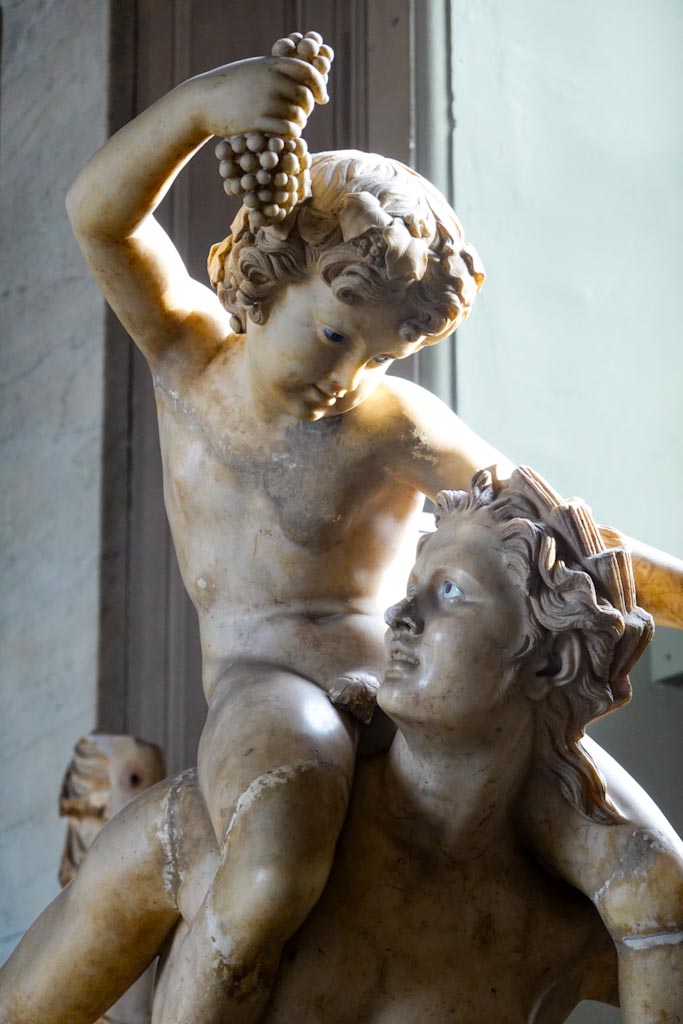

We paid a premium for the extra small, very early tour group, our intent being to give the experience the best chance for success. We hauled ourselves over to Vatican City just after sunrise, a little grumpy – cold, rainy, no breakfast. (Good news, by the way. It has been cold and rainy every single day since the first of March, so climate change was clearly a hoax.) We lined up with a couple of thousand others there to beat the crowds, and listened to our guide explain that we were attempting to visit the Vatican three weeks before Easter in a Jubilee year. “What were we thinking?” she chided.
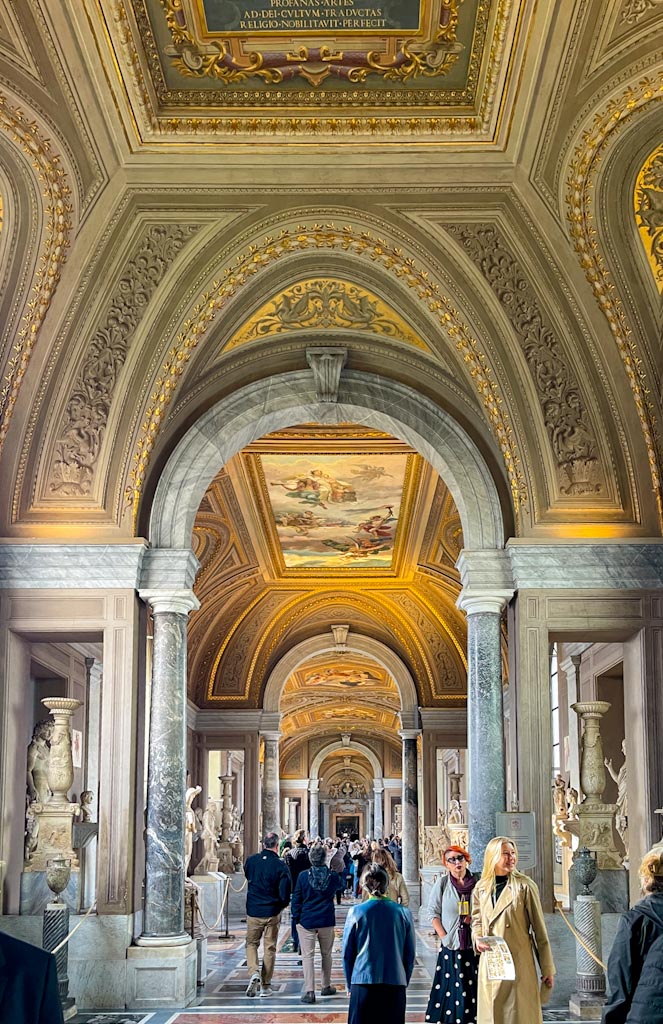
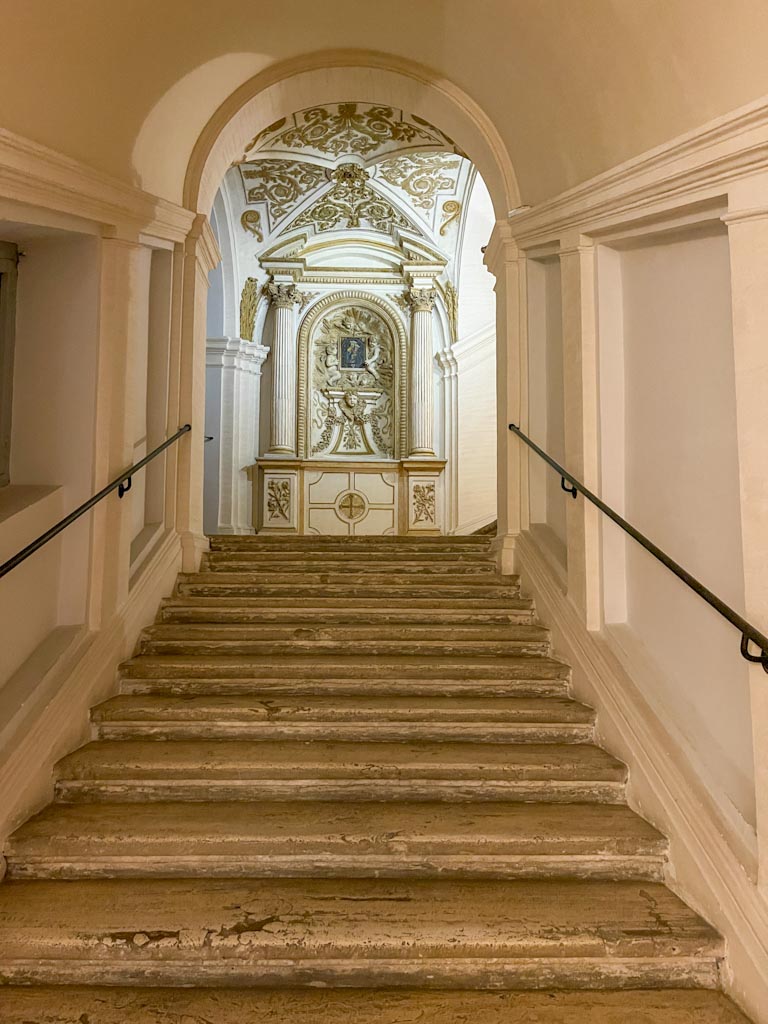
We dutifully followed our tour guide through the corridors, stairs, anterooms, waiting rooms, inner rooms, and salons, all filled with an overwhelming abundance of treasures. We were allowed 15 minutes in the Sistine Chapel to stare up at the ceiling. I decided this time limit was quite an important safety precaution as more than this would undoubtedly cause an epidemic of neck problems.
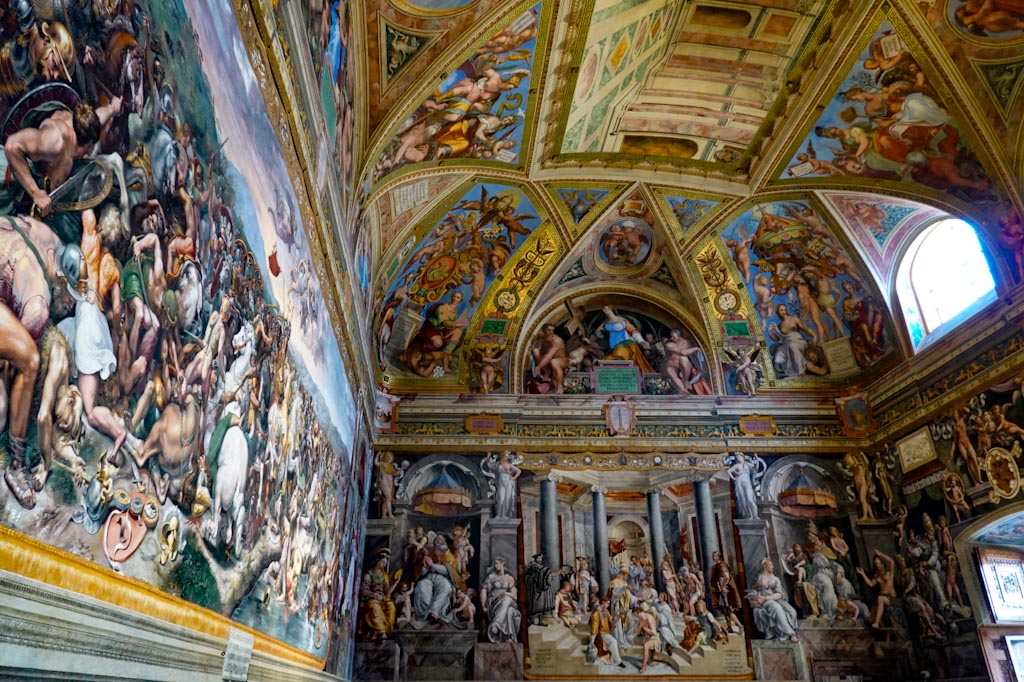
We then made our way to the massive Saint Peter’s Basilica which is so big that the human mind is literally not capable of perceiving the scale. Which, sort of begs the question, what was the point? In any case, while Saint Peter’s is the largest Catholic Church in the world, it is also pretty similar to all the other Catholic Churches in the world. Well, except for the fact that it is littered with some of the most treasured art on the planet. At the end of the tour we were offered the opportunity to wander about on our own and join the cue of “pilgrims” making their way through the special door where touching the jamb during a Jubilee year results in the forgiveness of all your sins from your whole life. Really. We didn’t make this up.

And so, we left Vatican City (add one more visited country to the list) feeling a vague sense of dissatisfaction that I had to ponder a bit to understand. We grabbed a table in a nearby cafe and sat discussing it for a couple of hours and I think came to understand at least some of our unease.
First, there’s the architecture. What becomes clear as you make your way through the compound, is that the entire edifice is very specifically designed, arranged, and decorated to provide the maximum shock and awe as you approach the Pope’s audience chamber. It is, in fact, a massive palace whose primary aim is to intimidate all who enter and impress upon them the immense power of the man who lives there. In this sense, it is no different than all the other celebrated, secular seats of power around the world – Versailles, Buckingham Palace, etc. Not long ago, we heard a sermon from a Christian minister in a Texas church point out that Christian Nationalism has always been the point of formally organizing the church. Constantine in the third century, he explained, was the first Christian Nationalist, turning the new religion into his base of power. This notion really resonated with me and the Vatican is the fullest expression of this quest for power and wealth through religion. Well, at least for now. (It would seem there is another project in North America attempting to replicate this model.)

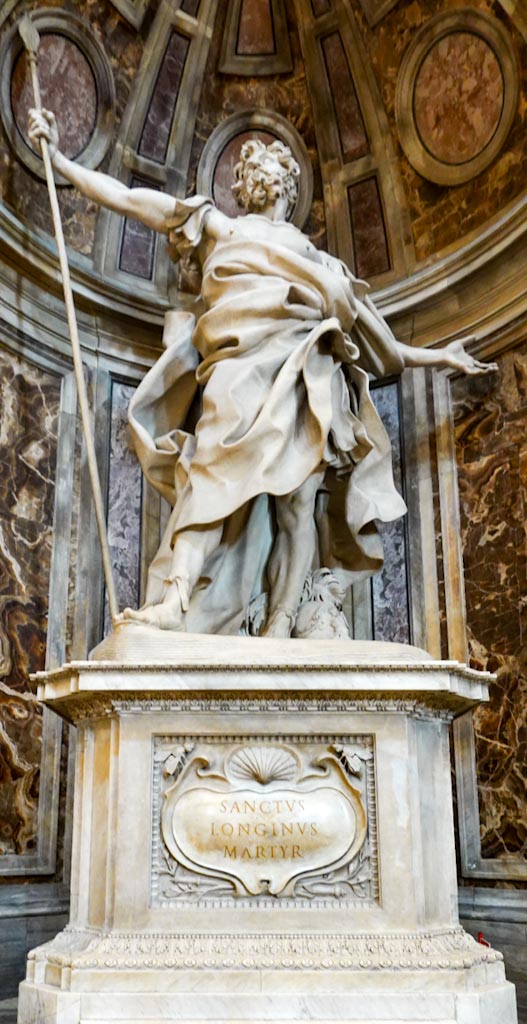
Second, there’s the matter of the art. Many years ago now, I was privileged to be involved in the design and construction of a small palace for a multi-billionaire in Los Angeles (back when a billion dollars was a lot of money). The project took a couple of years, and in that time, I had exposure to a world of wealth and luxury that I could not have imagined, previously. Among the many things I took away from that experience, was the casual way that people with this kind of wealth live, surrounded by priceless art and antiques, as though it had been picked up from the local thrift store. (Well, to be fair, it was generally used.) I was flooded with that same feeling as we toured the Vatican. Priceless treasures haphazardly distributed without a lot of care, certainly not displayed for the appreciation of the public. Rather, these artifacts and the geniuses who had created them, were merely the trappings of power and wealth, carelessly scattered about. In fact, it turns out that the Italian government actually had to negotiate an agreement with the church to require access by the public to these treasures. Otherwise, the Vatican would choose to limit access, so as not to be bothered.
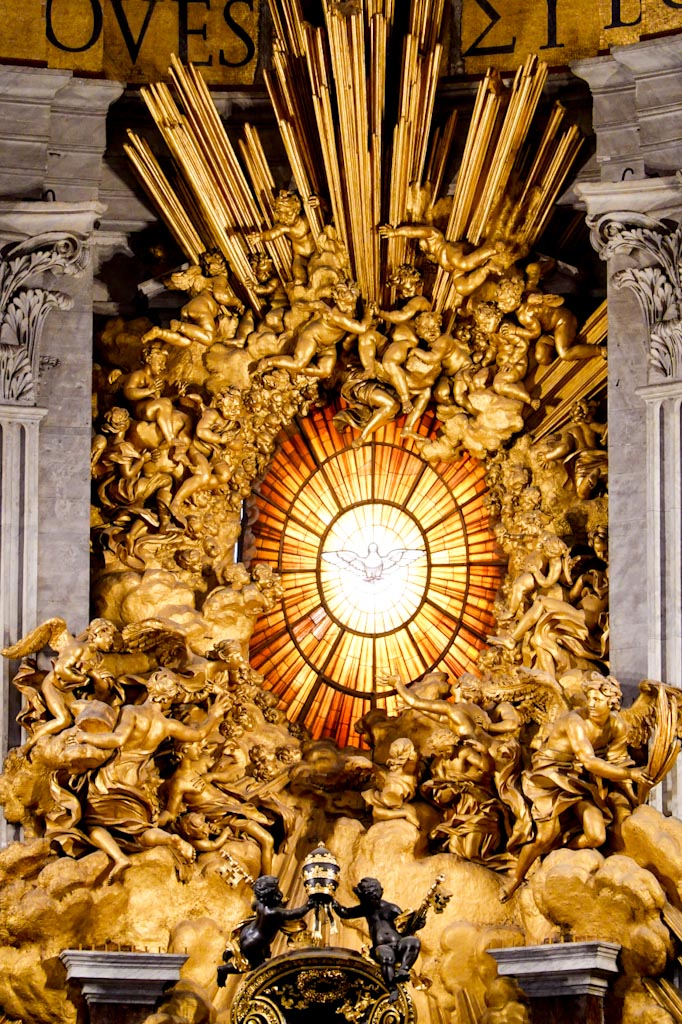
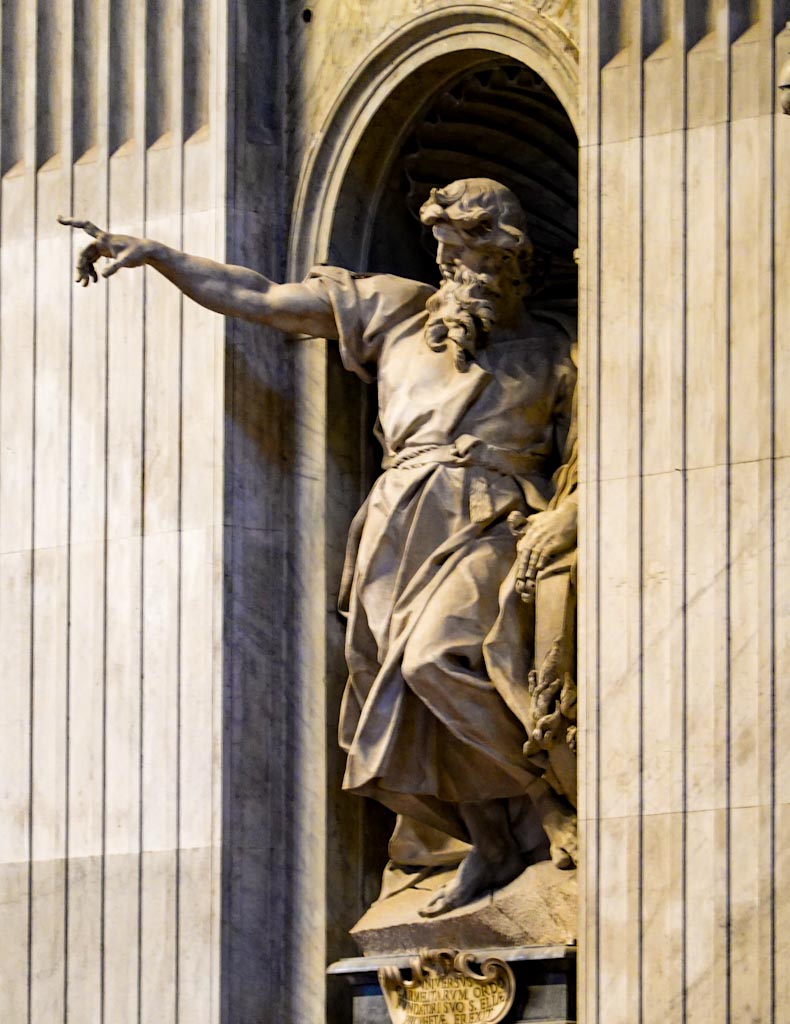
Take The Pieta, as an example. Michelangelo created this masterpiece at the age of 24 (hard to process) and there it sits, off in the corner, so to speak, poorly lit, behind a wall of scratched plastic panels, where it is pretty much lost in the general interior hub-bub of the basilica. Contrast this with the way Florence displays The David – alone, in a purpose built room, with flawless lighting, and an understated, yet elegant complimentary decor. Only one of these was a spiritual experience, for me.
To put it simply, wandering the rooms and hallways of this vast complex, the disrespect shown by the owners of the Vatican’s vast collection for the genius of the artists and artisans, and their extraordinary achievements, is palpable. It’s a casual expression of privilege, born of extreme power, that resonated with my experience decades earlier in Los Angeles with the billionaire.
So, is the Vatican an amazing place? Sure. I am not sorry we made the effort. The art and architecture are stunning. The context, however, is unsettling and has lessons for our current moment where extreme wealth and power have been allowed to accumulate to an elite few. History, as they say, may not repeat, but it certainly does rhyme.
So Many Pastas, So Little Time – Bonnie’s Perspective
Stunning art and architecture aside, the real reason we visit Italy is the food. Having spent 7 weeks in Italy over the last 2 years, I was feeling confident about my knowledge of pasta shapes. Beyond the familiar and ubiquitous shapes that we all know and love – spaghetti, linguine, rigatoni, fettuccine, penne – we’ve enjoyed tortellini and strozzapreti in Bologna, gigli in Florence, agnolotti and plin in the Piemonte region, bigoli in Venice, strangozzi in Umbria, to name a few. In Sicily, I added busiate to my list of known pasta shapes. A medium length, twisted pasta, busiate gets its name from busa – a grass that grows all around Sicily. The stem of the busa grass is used to shape the pasta.
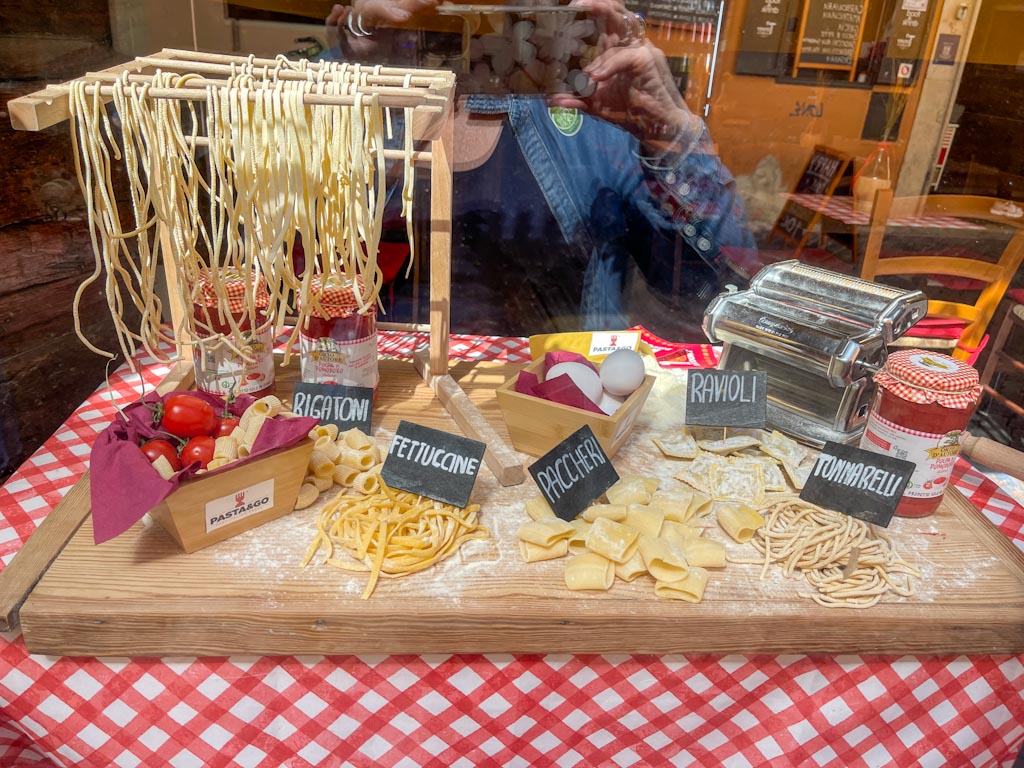

My feelings of accomplishment and pride were vanquished when a quick internet search revealed that Italy is home to over 350 officially recognized varieties of pasta and there are many more regional variations. This project is going to require more time, and more trips to Italy.
AKA Arancini – Bonnie’s Perspective
Supplí, Rome’s version of arancini, is a much-loved street food throughout the city. Larger than arancini, this Roman snack comes with numerous different fillings, but “supplí clasico” includes tomato sauce and mozzarella cheese. It’s common to see Romans standing on, or walking along, the street munching on a supplí. Embracing this cultural behavior, we had to do the same!
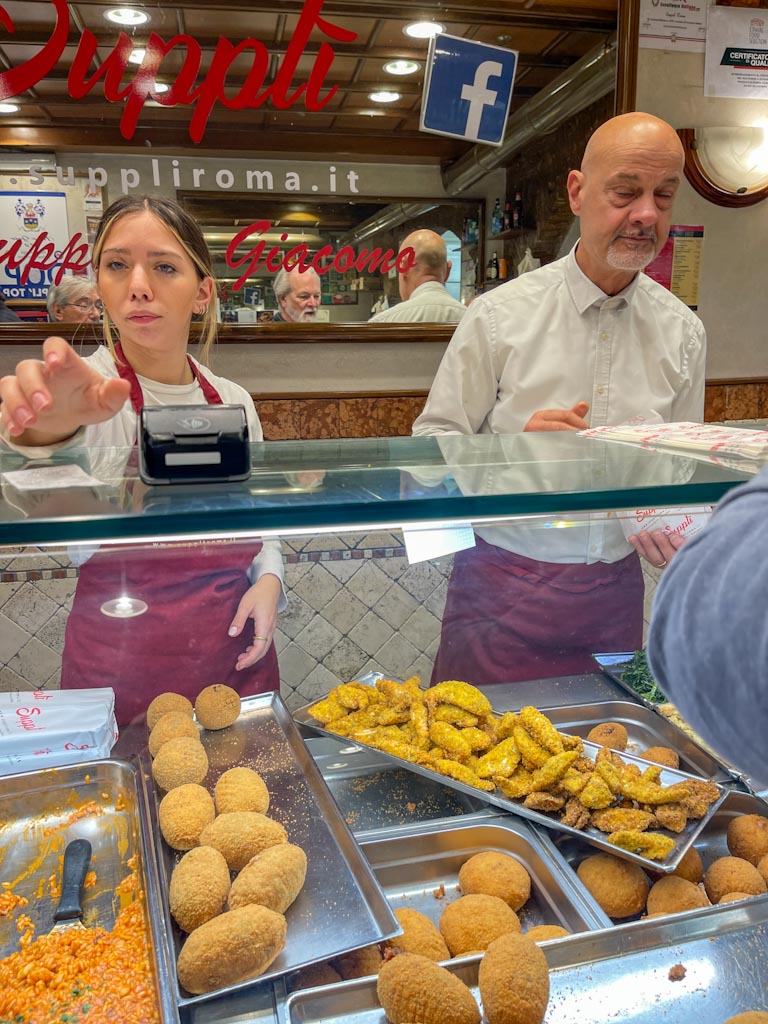

A Different Appoach – Bonnie’s Perspective
A sprawling city layered with history, Rome can feel overwhelming. On our first visit in 2023, we were racing around trying to see as much as we could – the Pantheon, Coliseum, Spanish Steps, Trevi Fountain, etc. It was a quick introduction to the Eternal City and one we will always treasure. This time, we decided on a different approach – one neighborhood at a time.
Other than our early morning trek to the Vatican, we spent our time in Rome’s Trastevere neighborhood. Nestled on the West Bank of the Tiber River, Trastevere feels like a small village within a big city. It’s a charming and vibrant neighborhood with a bohemian vibe, cobblestone streets, narrow alleys, ivy-covered buildings, and rich history. It feels authentically Roman. Mornings are quiet with locals shopping at small markets or enjoying coffee in a piazza. In the evenings, it’s much livelier with the many outdoor cafes filled with locals and tourists.
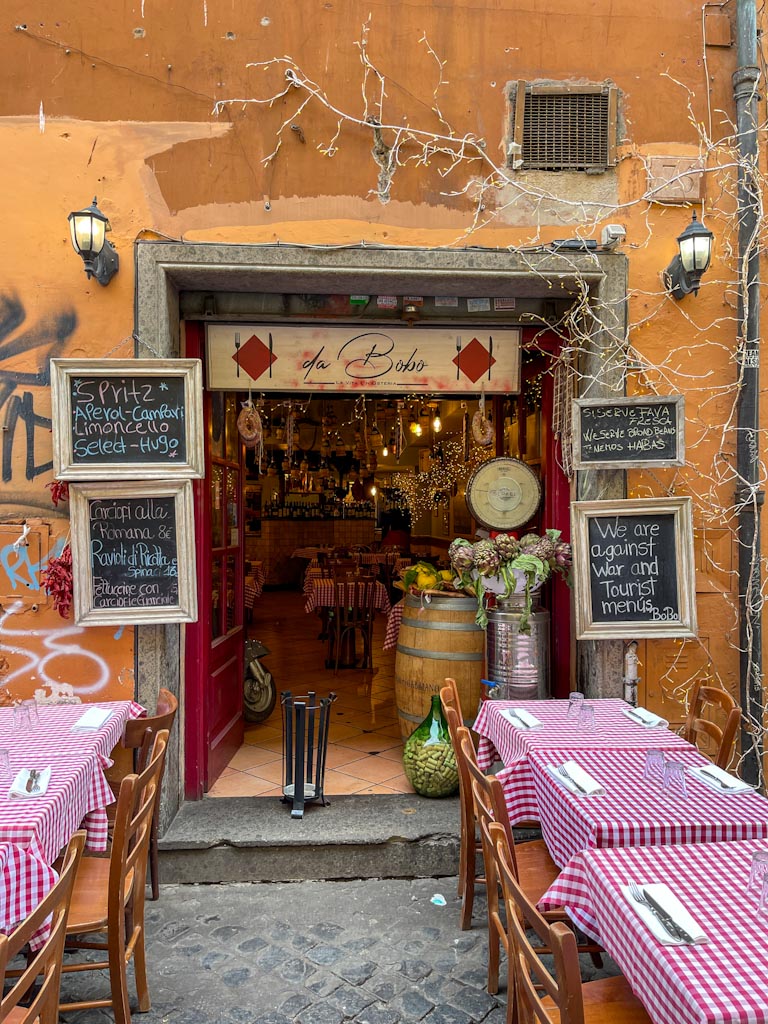
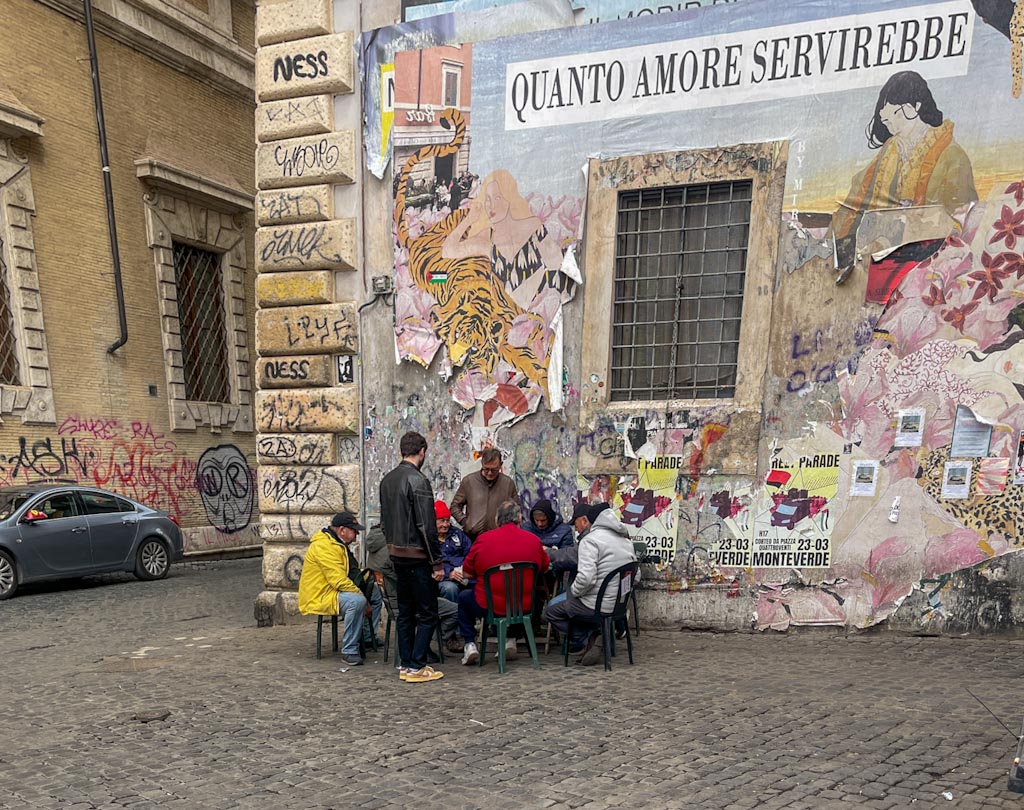
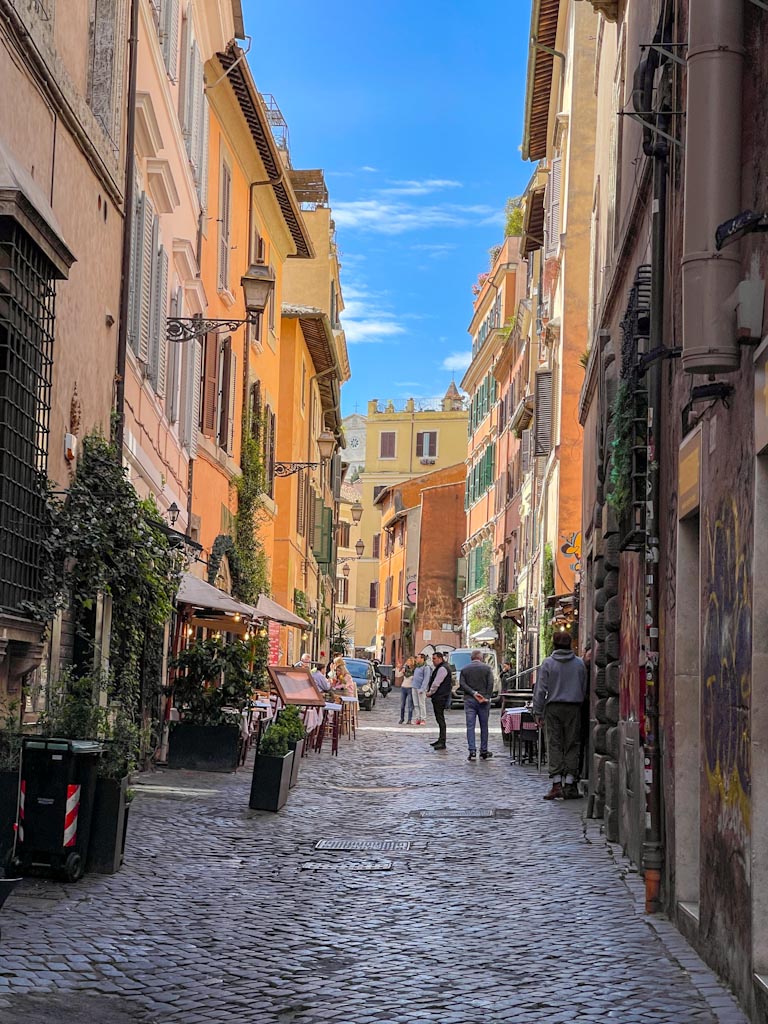
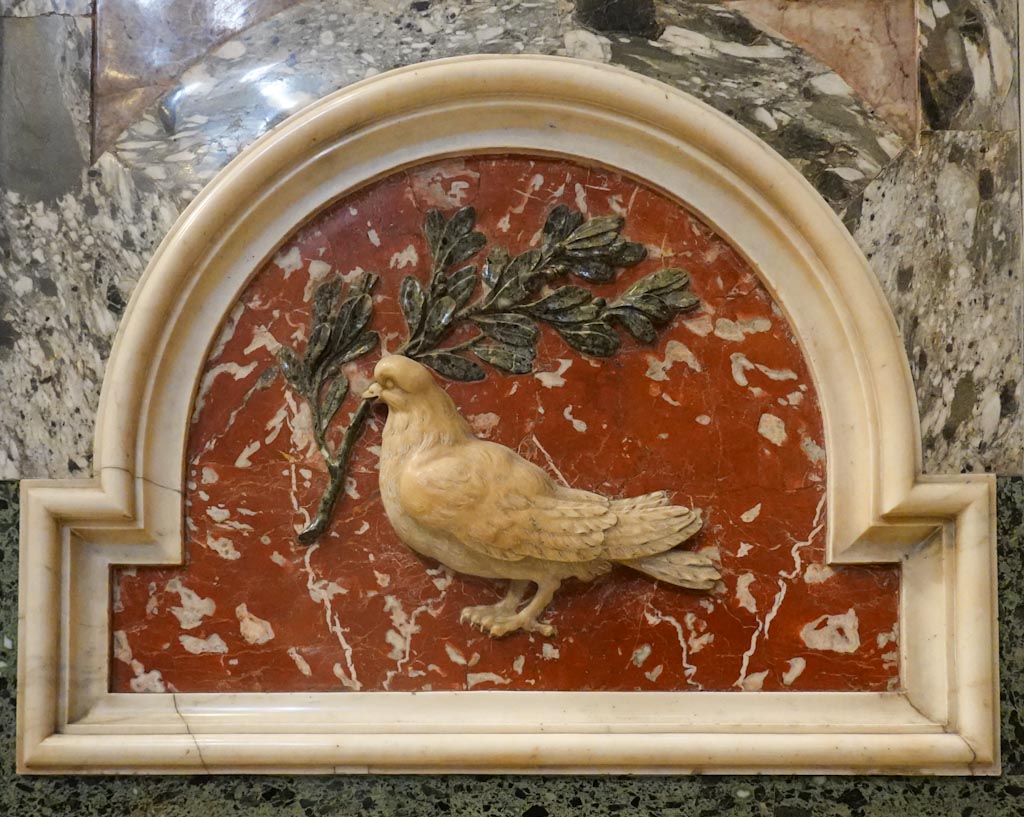
Wandering about one morning, we discovered the Basilica of Santa Maria in Trastevere, one of the oldest churches in Rome. Originally built in the 3rd century, it was rebuilt in the 12th century. The church’s façade features a golden mosaic and inside the portico, the exterior walls of the church are covered with ancient tombstones from the early Christian era, the Middle Ages, and the Renaissance period, and even a few pagan sarcophagi from early Rome. We were captivated by the way this space preserves the lives and faith of Romans across many centuries.
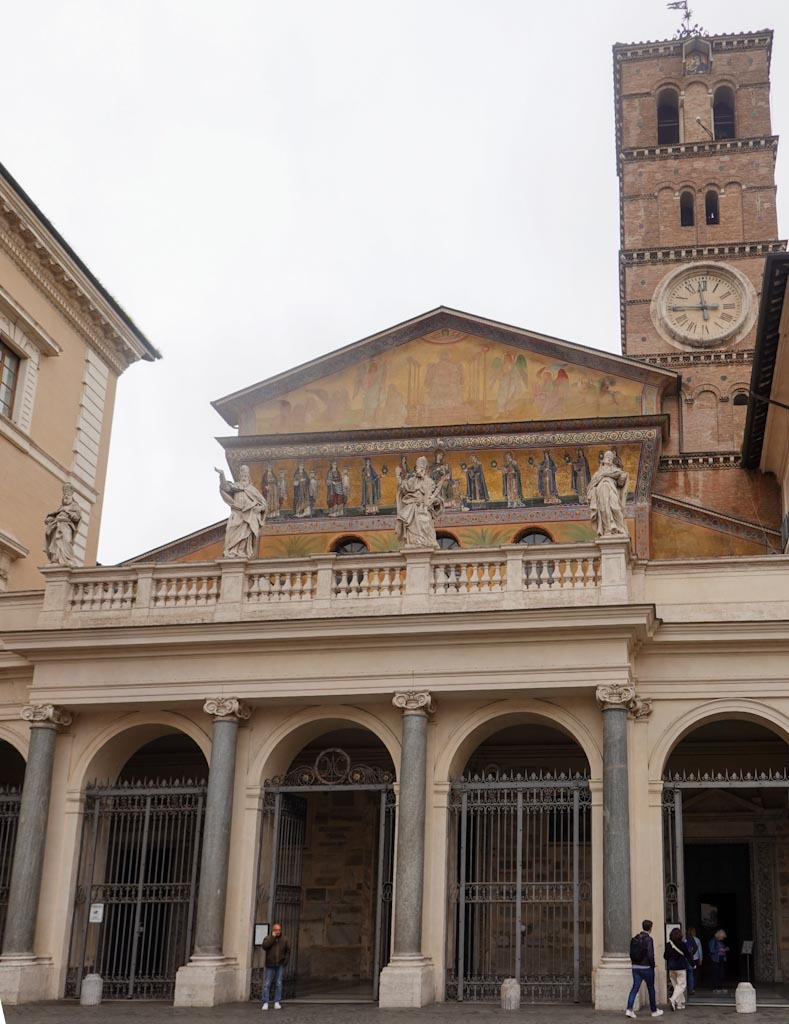
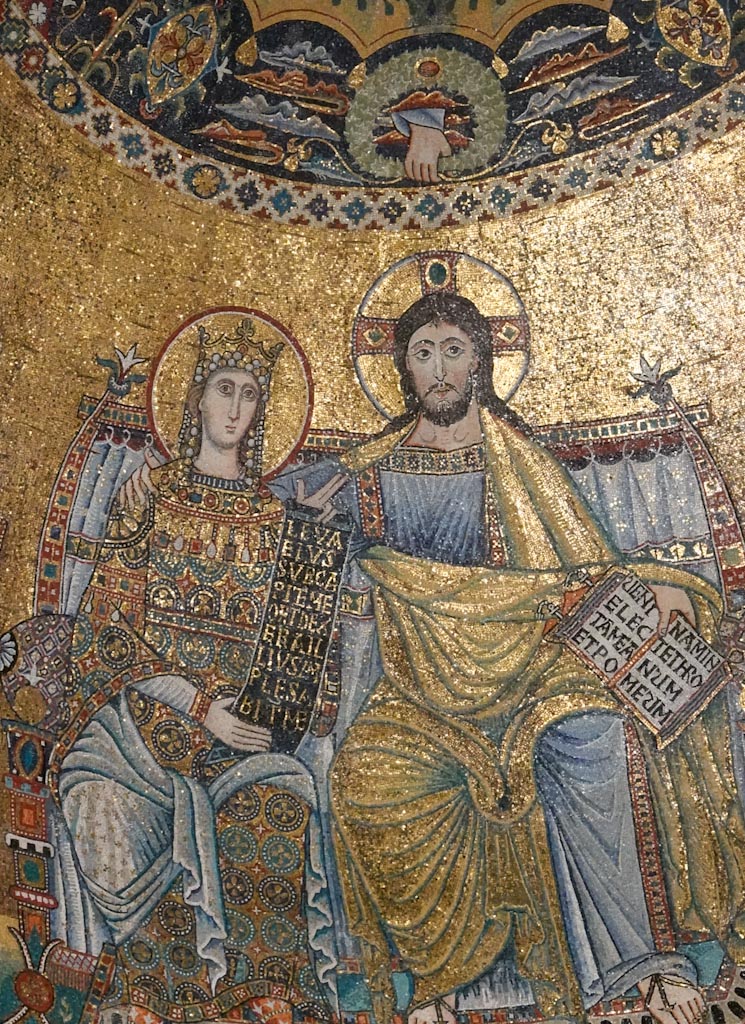
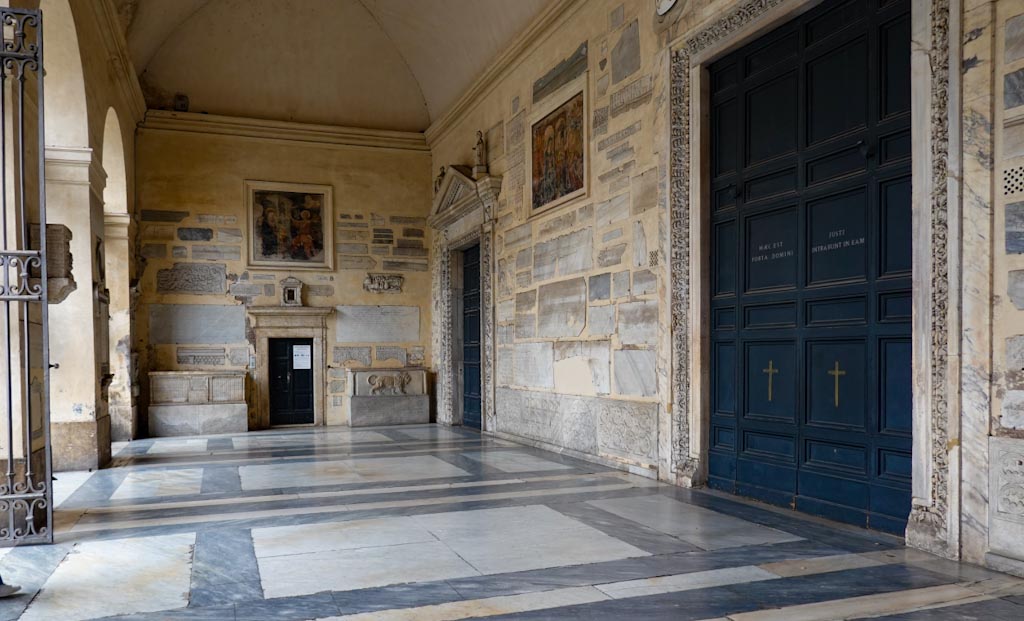
The inside, the basilica is richly decorated with marble walls and 22 granite columns that were repurposed from a Roman bath complex. The coffered ceiling is gilded, and the stunningly beautiful mosaics in the apse, created in the 12th century, rival those we saw in Ravenna last year.


So, instead of rushing about, it seemed we were able to actually feel Rome, not just see it and we left with memories, not just photos.
Viva la Roma!



more adventures, art, architecture and of course food. I love reading your thoughtful treatises on Rome and adore seeing how you write well together and “finish each other’s sentences”. Celebrating your travels and togetherness.
We are once again transprrted to a place we knew well and your photos are stellar! We understand your impression of the Vatican and found Trastavere authentic and charming, and , like you, found the Basilica stunning. Your commentary throughout is a pleasing blend of scholarly and personal and we were so so touched by Ed’d 59th Anniversary aside reflection.
Thank you for such Special Perspectives and, and Rick Steves says, jut Keep on Traveling! J&N
ps I am on my 16th day of healing and feel gratitude for the caring and love surrounding me! J.
Ed, we had a nearly identical reaction to the Vatican when we toured it a few years back. The amount of wealth is staggering, and for a Catholic girl who was raised to believe that my faith was dedicated to serving the poor, it nauseated me to see it, as you say, “carelessly scattered about.” I thought what just one of those pieces, if monetized, could do for the needy. The reason these treasures are priceless is that they have never been sold and therefore literally have no price! Agree totally that they are “merely the trappings of power and wealth.” The context, as you say, is unsettling. No wonder the current Pope declined to live in the official papal residence and instead chose a more “modest” apartment in the Vatican.
Overall, glad you got a deeper dive into Rome and its many pleasures (i.e. pizza)!
Thanks, Mary Beth. It’s nice to hear that we’re not alone in our experience.